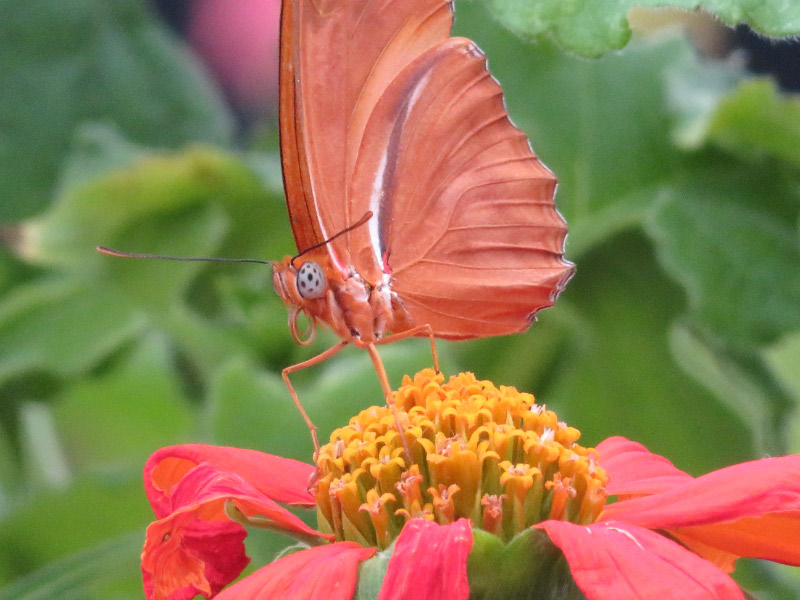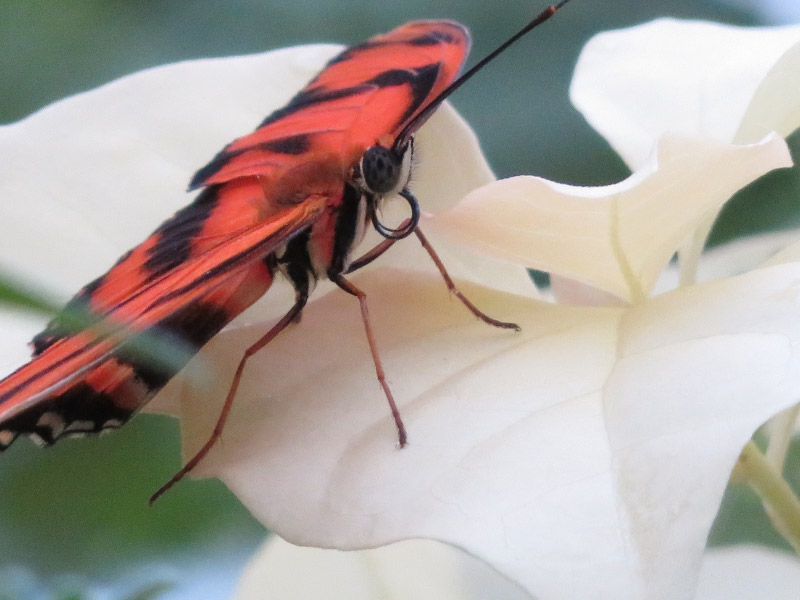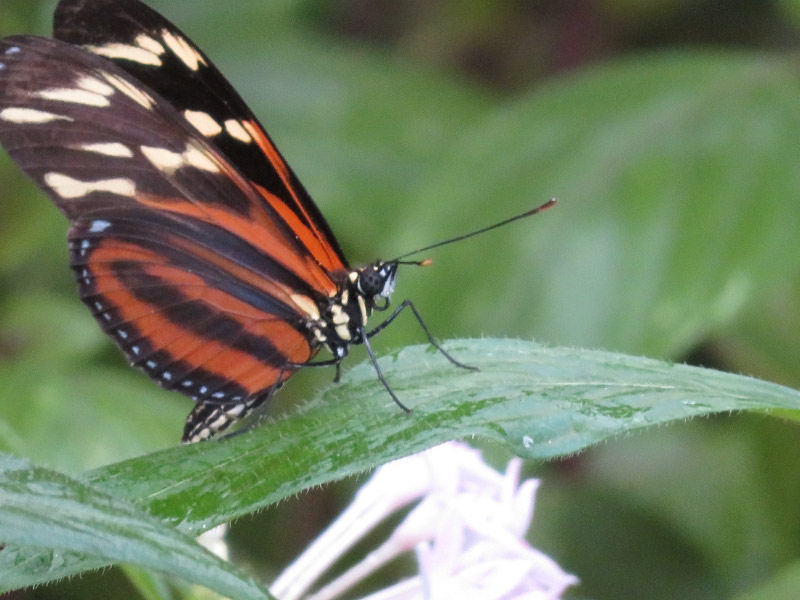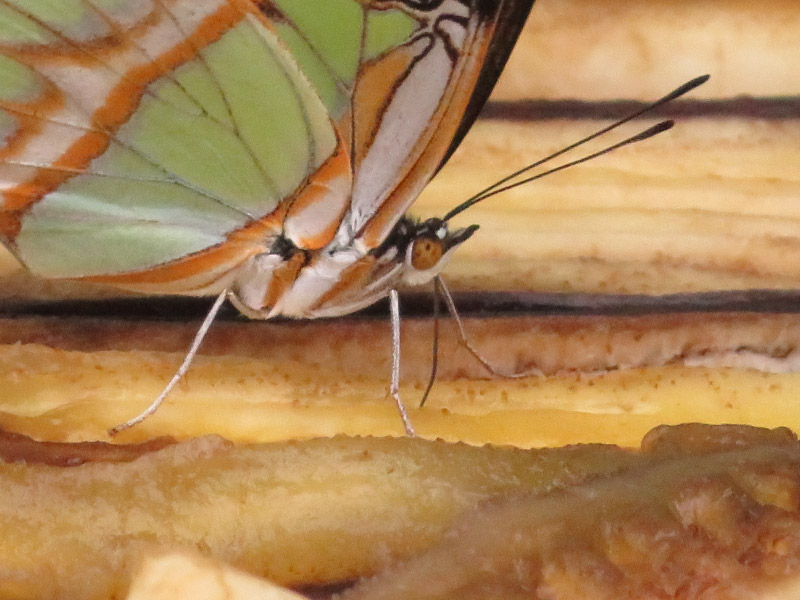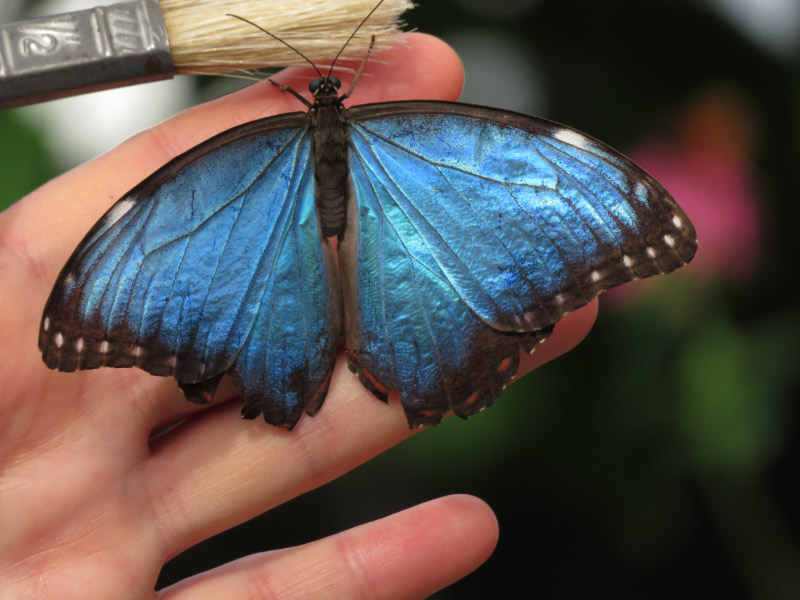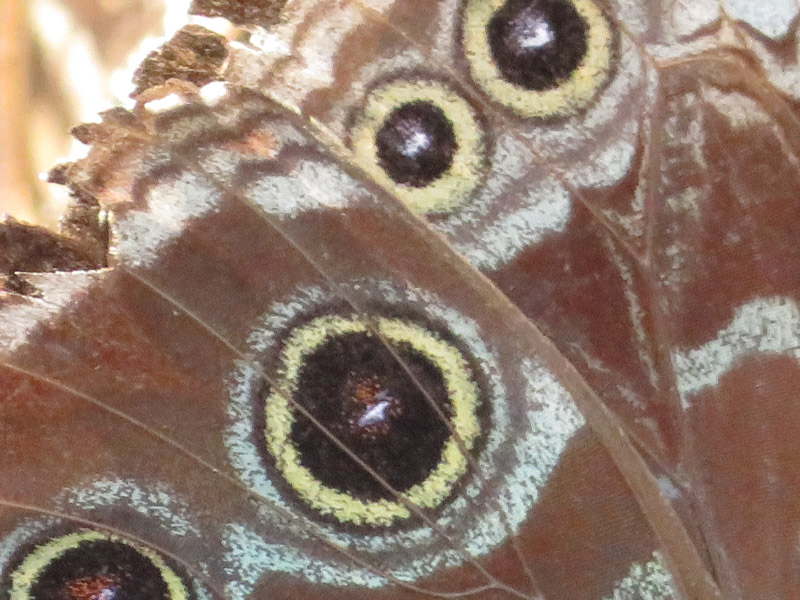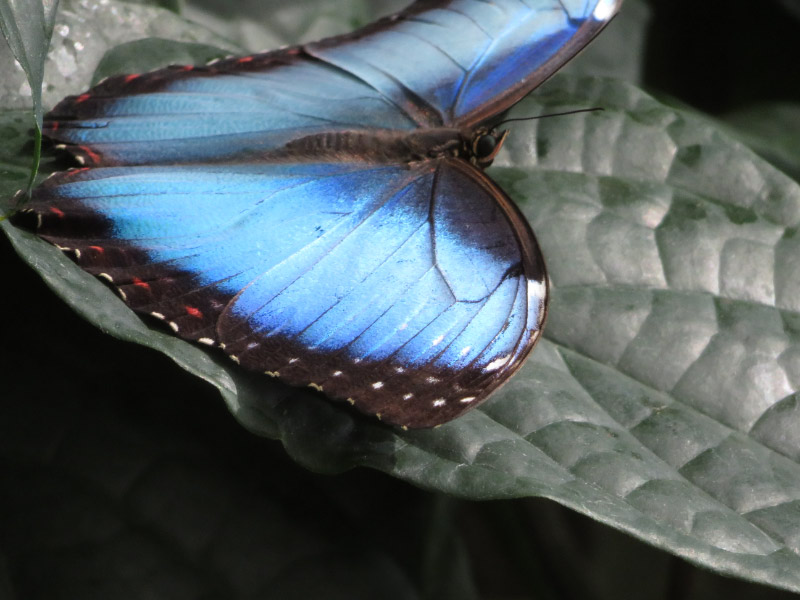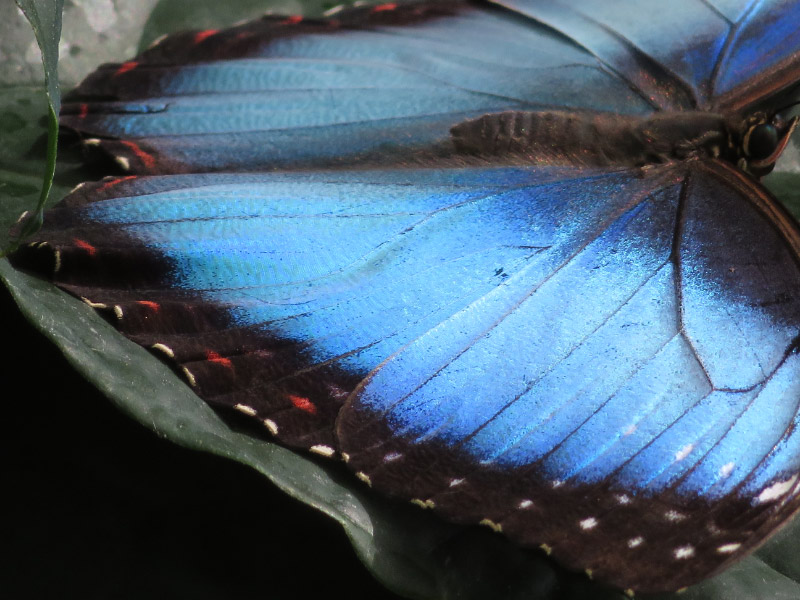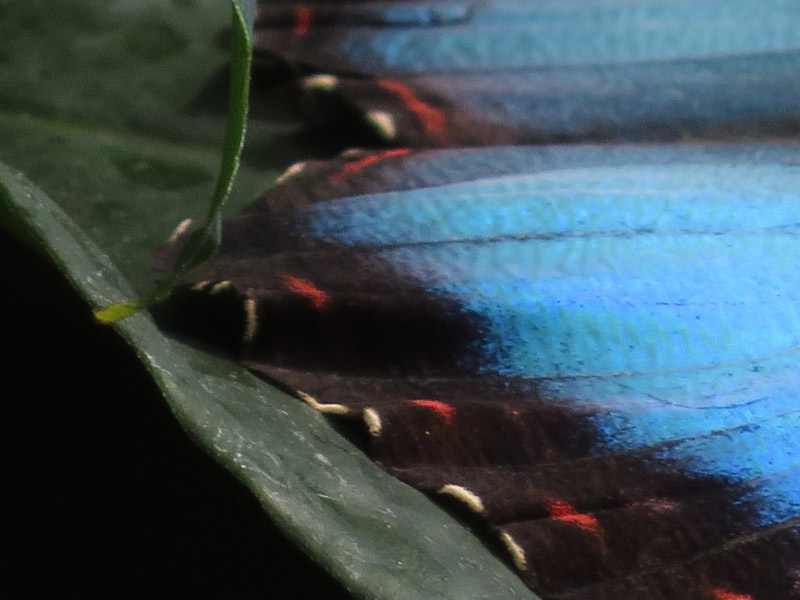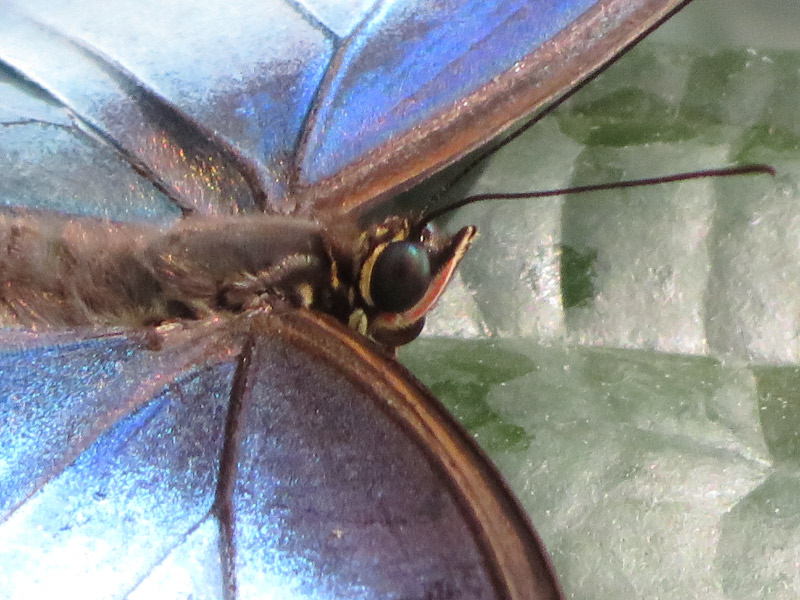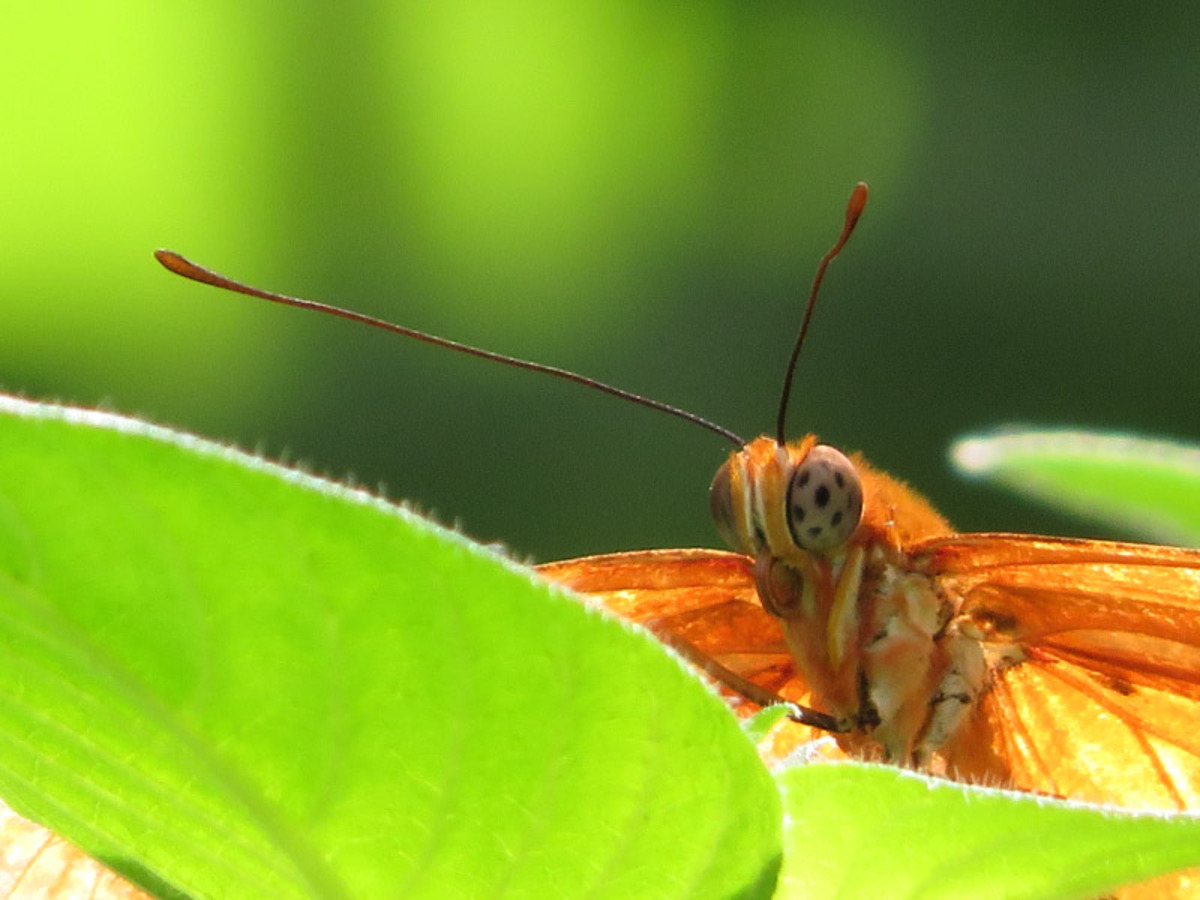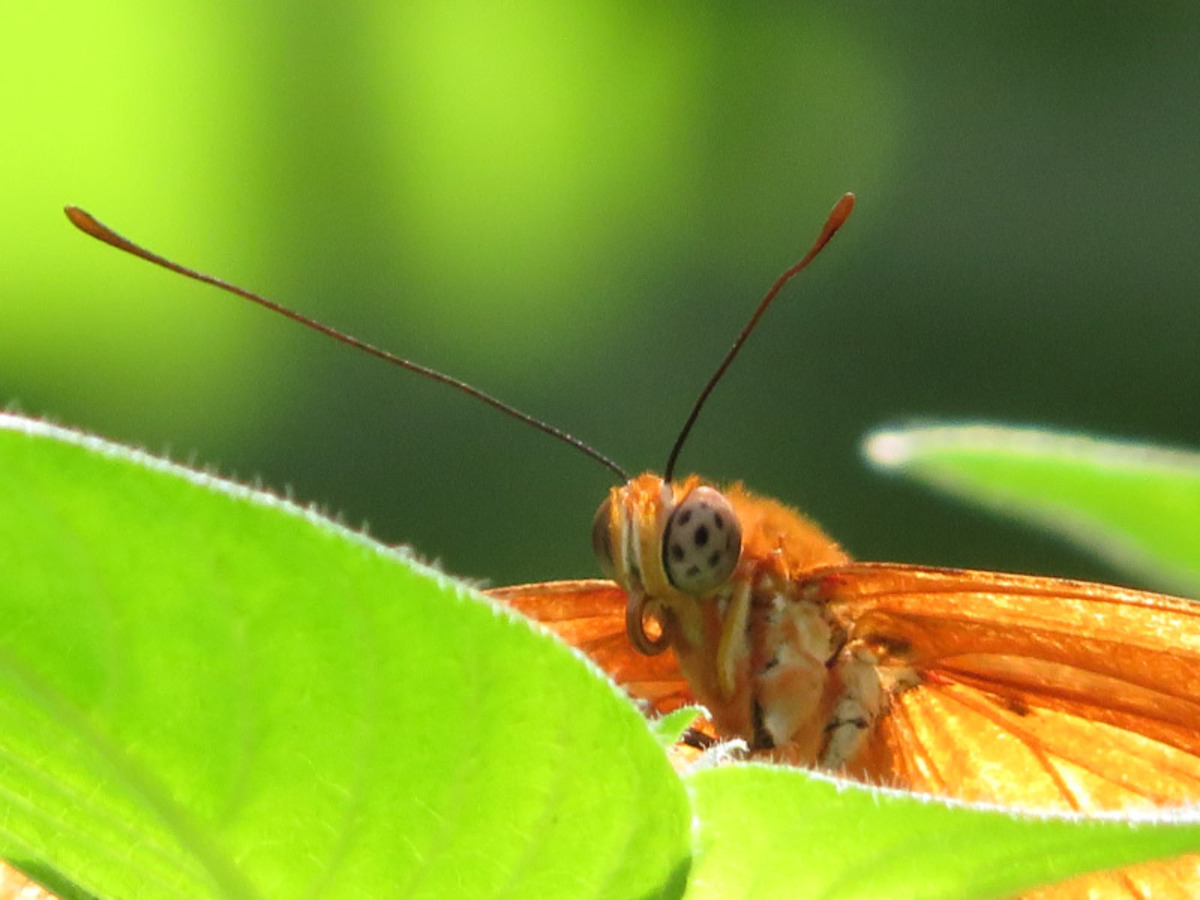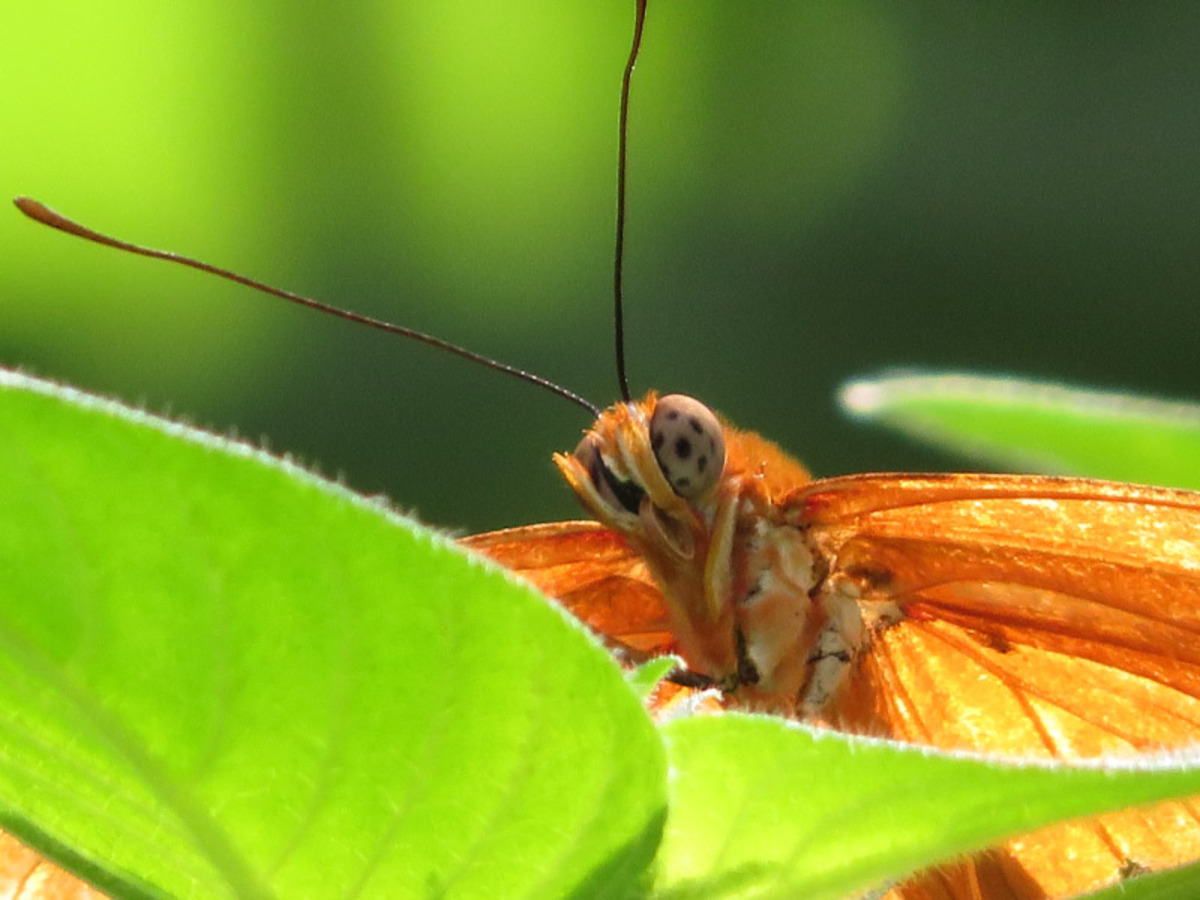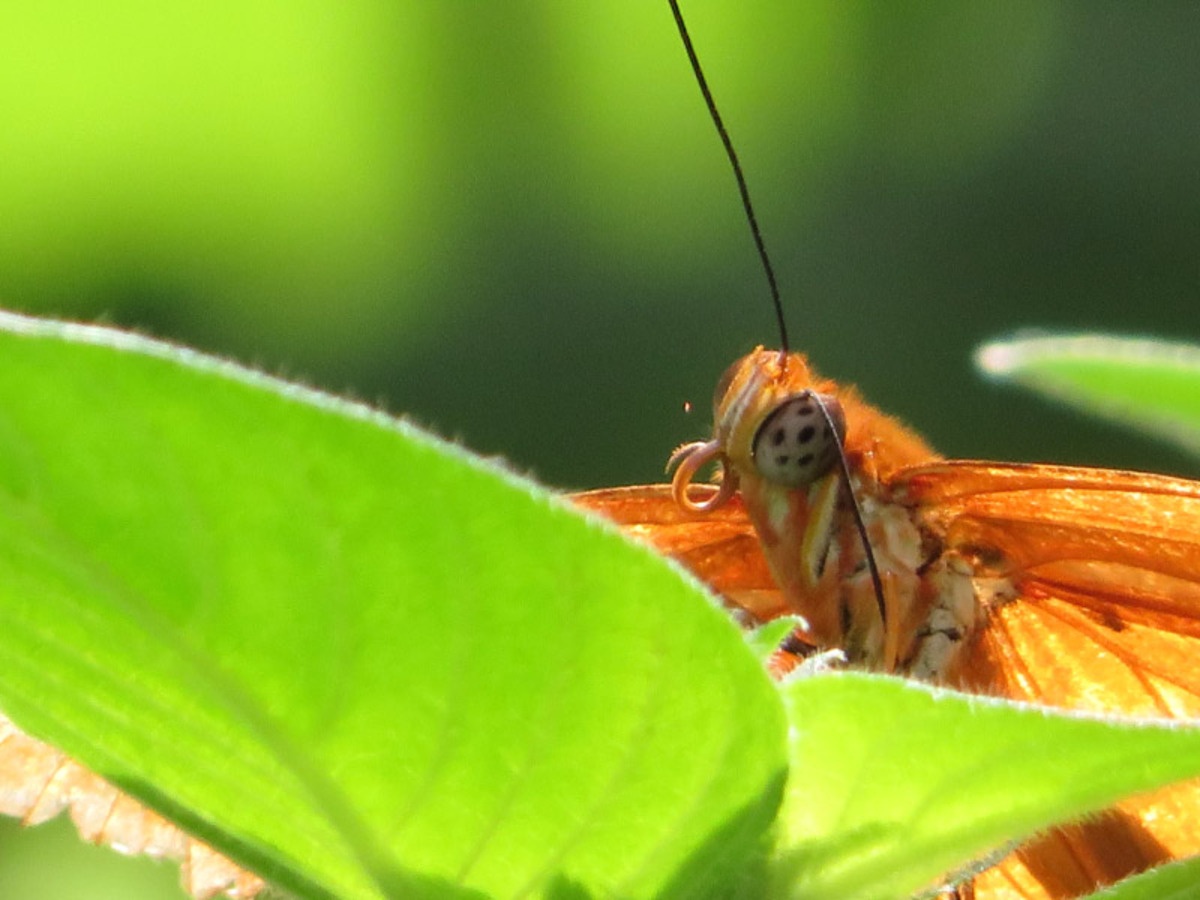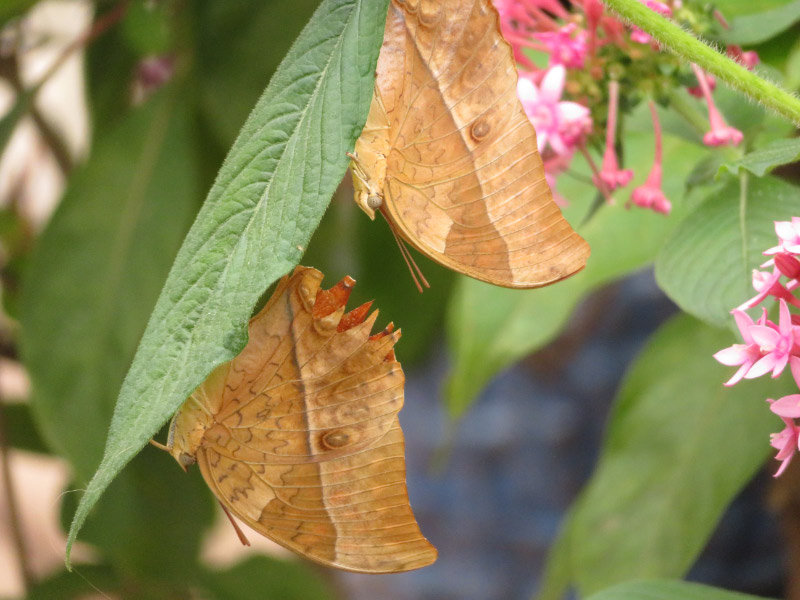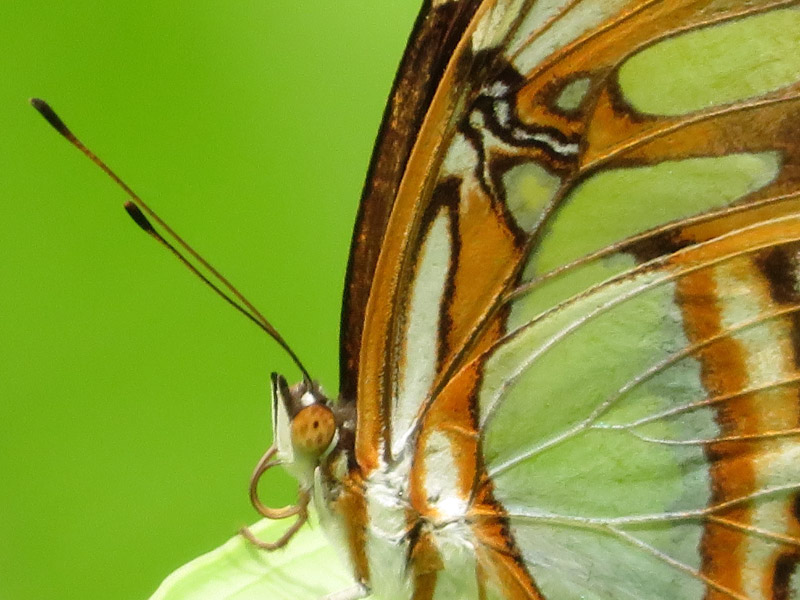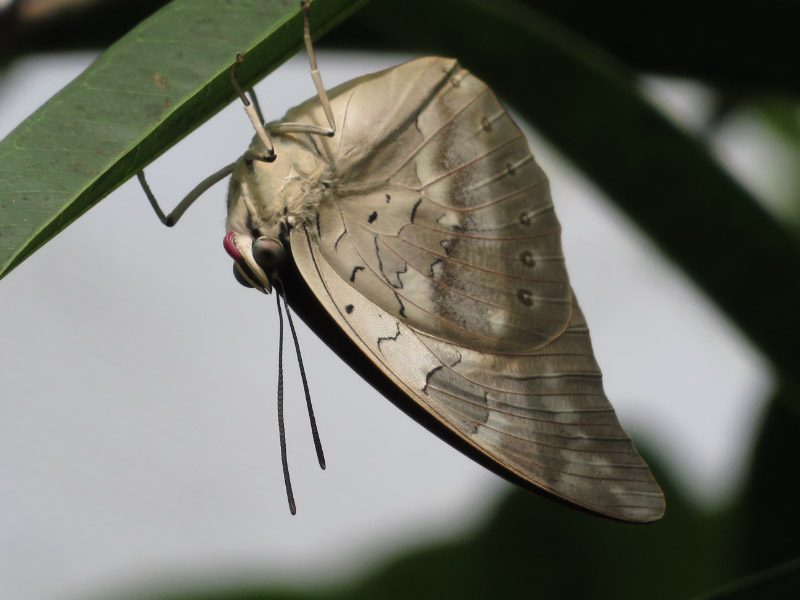More Butterfly Eyes and Palpi
/Last week I posted about the Blue Morpho and Owl Butterflies – included macro views of their eyes and palpi. This week I have pictures of eyes and palpi of some other butterflies in Brookside Gardens’ Wings of Fancy. It’s also easy to see the proboscis (some coiled…others extended) in these images. Note also the number of legs. All appear to have 4 – rather than six!
It turns out that the largest family of butterflies – Nymphalida (brush-footed butterflies or four-footed butterflies) stand on only 4 legs. The two that are closest to the head are not used as legs; their purpose is not clear and may be different for different species. In the picture below you can see them: bristled and pointing downward toward the legs. Note that one of the palpi is damaged. Butterfly wings often look battered…and other parts of their bodies are easily damaged too.

